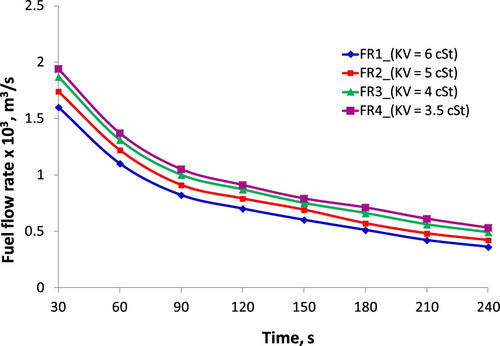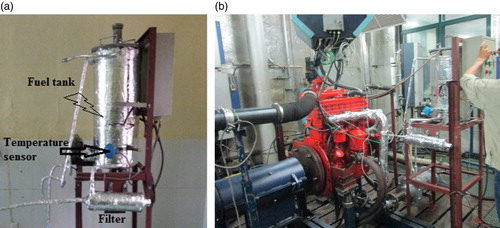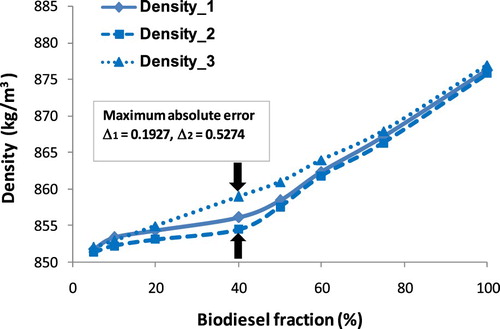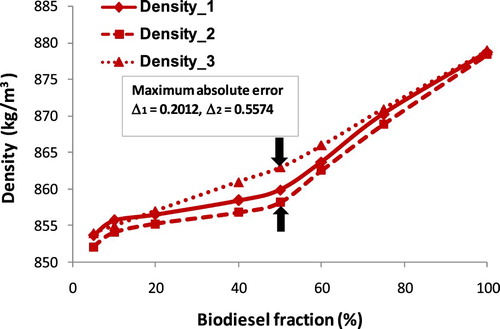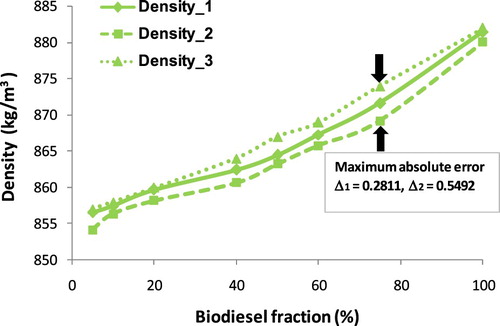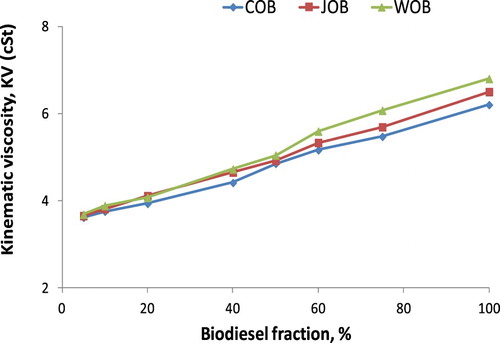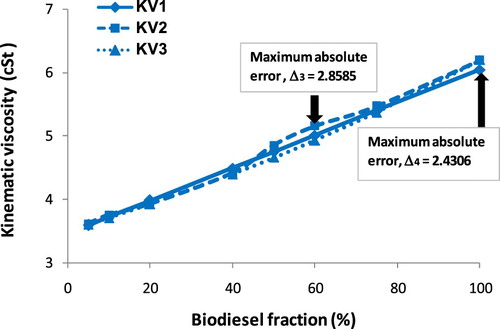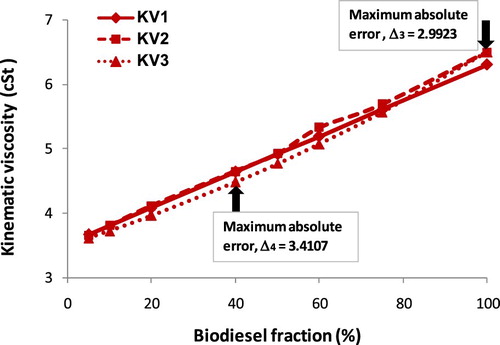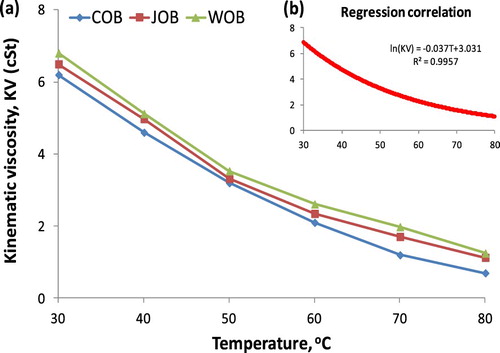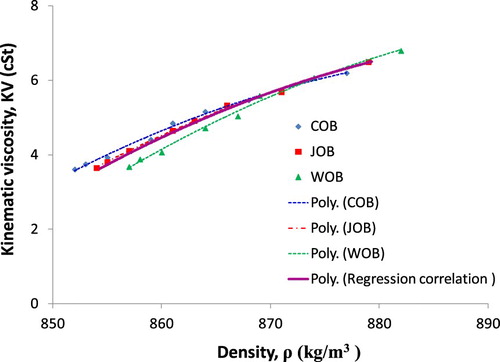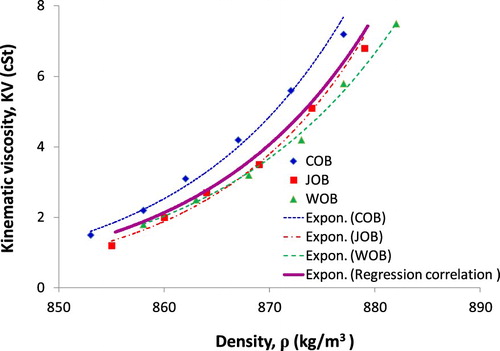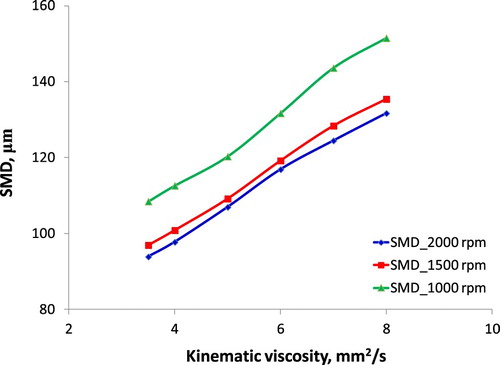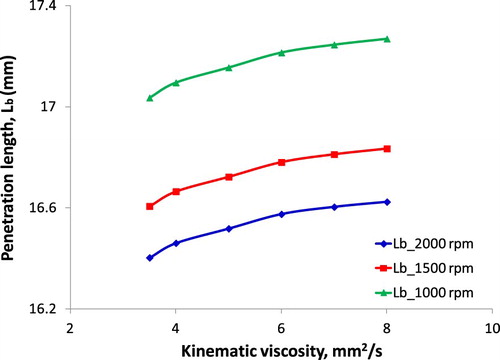Figures & data
Table 1. Properties of COB, JOB, WOB, and DF at 30°.
Table 2. Technical parameters of diesel engine D243.
Table 3. Measurement and calculation methods for biodiesel blend density at 30°C.
Figure 5. The relationship between density and fraction of three studied biodiesel types (a), the regression correlation of experimental values (b).
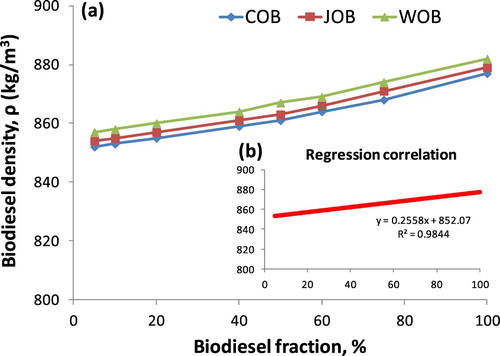
Figure 6. The relationship between density of three types of pure studied biodiesels and temperature (a), the regression correlation of experimental values (b).
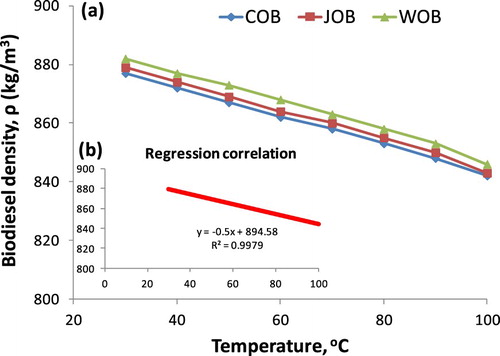
Table 4. KV values of biodiesel blends at 30°C.
Figure 14. The relationship of FR through filter and time at different values of kinematic viscosity.
